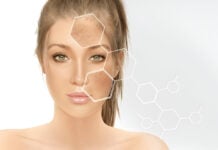Pregnancy brings a whirlwind of changes, from growing bellies to shifting hormones—and for many, it also brings visible changes to the skin. While a “pregnancy glow” is real for some, others may experience frustrating or even alarming dermatological issues. These pregnancy-related skin conditions range from harmless pigmentation changes to rare autoimmune disorders that require medical attention.
Understanding these conditions helps expectant mothers feel informed and empowered, and ensures timely management for both maternal and fetal health.
Common Skin Changes in Pregnancy
Hormonal surges during pregnancy influence skin texture, pigmentation, and immune response. Some of the most frequently reported conditions include:
1. Melasma (“The Mask of Pregnancy”)
Melasma is characterized by symmetrical patches of brown or gray-brown pigmentation, typically on the cheeks, forehead, and upper lip. It’s driven by increased estrogen and progesterone, which stimulate melanin production.
- Who is affected? Up to 50–70% of pregnant women
- Is it harmful? No, it’s purely cosmetic
- Management: Use broad-spectrum sunscreen daily, wear hats, and consider gentle skincare. Topical lightening agents like azelaic acid may be safe under medical guidance. Postpartum fading is common.
2. Linea Nigra
This is a dark vertical line that appears down the center of the abdomen due to hormonal changes and increased melanin. It is completely harmless and typically fades after delivery.
Itchy Skin Conditions During Pregnancy
Pregnancy often makes the skin more sensitive, leading to itching or rashes. While some causes are mild, others need medical assessment.
3. Pruritic Urticarial Papules and Plaques of Pregnancy (PUPPP)
PUPPP is the most common pregnancy-specific skin eruption, typically appearing in the third trimester. It starts in stretch marks and may spread to the abdomen, thighs, and buttocks.
- Symptoms: Red, itchy bumps and plaques
- Cause: Unknown, but possibly related to skin stretching
- Treatment: Topical corticosteroids, soothing baths, antihistamines if necessary
- Outcome: Resolves shortly after delivery and does not affect the baby
4. Prurigo of Pregnancy
Characterized by itchy, firm papules, often on the arms and legs, this condition can occur at any point during pregnancy.
-
Management: Topical steroids and moisturizers
-
Prognosis: May persist postpartum, but generally benign
Rare but Serious Pregnancy Skin Conditions
Though uncommon, certain pregnancy-related skin disorders can indicate underlying immune or liver issues and may pose risks to both mother and baby.
5. Intrahepatic Cholestasis of Pregnancy (ICP)
ICP is a liver condition that causes intense itching, especially on the hands and feet, without visible rash.
- Risk to baby: Increased risk of preterm birth or fetal distress
- Treatment: Ursodeoxycholic acid and close monitoring
- Signs to watch: Dark urine, pale stools, jaundice
- Note: Requires immediate medical attention
6. Pemphigoid Gestationis
This rare autoimmune blistering disorder typically begins in the second or third trimester with intensely itchy red patches that evolve into blisters, usually starting around the navel.
- Cause: Autoantibodies attacking the skin’s basement membrane
- Risks: Preterm labor, low birth weight, and skin lesions in the newborn
- Management: High-potency topical or systemic corticosteroids, close obstetric monitoring
- Postpartum note: May flare after delivery and recur in future pregnancies or with hormonal contraception
General Skin Care Tips During Pregnancy
-
Prioritize sun protection: Many pigmentation issues are worsened by sun exposure. Use SPF 30 or higher daily.
-
Moisturize regularly: Helps relieve itching and supports skin barrier function.
-
Avoid harsh products: Retinoids and hydroquinone are contraindicated in pregnancy. Instead, opt for pregnancy-safe alternatives like vitamin C or azelaic acid.
-
Stay hydrated: Good skin health starts from within.
-
Seek help for unusual symptoms: Sudden, severe itching, blistering, or jaundice should never be ignored.
When to See a Dermatologist
While many skin changes are a normal part of pregnancy, it’s best to consult a dermatologist or obstetrician if you experience:
- Sudden, severe or persistent itching
- Blistering rashes
- Pigmentation changes that rapidly spread
- Emotional distress related to skin appearance
Early diagnosis and appropriate management can prevent complications and provide peace of mind.
Pregnancy is a time of transformation, and that includes your skin. From the benign beauty of melasma to the urgent concerns of pemphigoid gestationis, pregnancy-related skin conditions vary widely in presentation and significance. With proper care, most can be managed effectively while keeping both mother and baby safe.
Being informed helps expectant mothers distinguish normal changes from those needing medical attention—ensuring a healthier, more confident journey through pregnancy.
References
-
Ambros-Rudolph, C. M. (2011). Dermatoses of pregnancy—Clues to diagnosis, fetal risk and therapy. Annals of Dermatology, 23(3), 265–275. https://doi.org/10.5021/ad.2011.23.3.265
-
Tunzi, M., & Gray, G. R. (2007). Common skin conditions during pregnancy. American Family Physician, 75(2), 211–218.
-
Kroumpouzos, G., & Cohen, L. M. (2003). Specific dermatoses of pregnancy: An evidence-based systematic review. American Journal of Obstetrics and Gynecology, 188(4), 1083–1092. https://doi.org/10.1067/mob.2003.230












